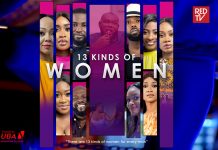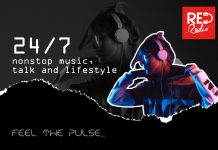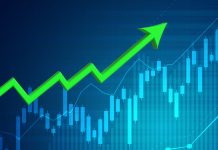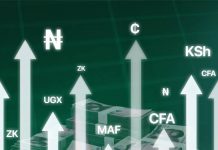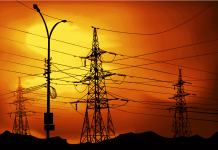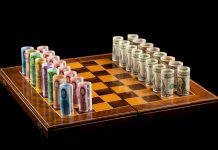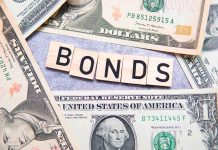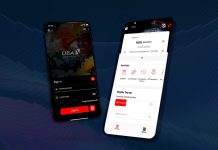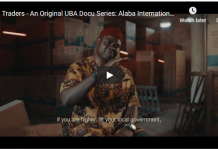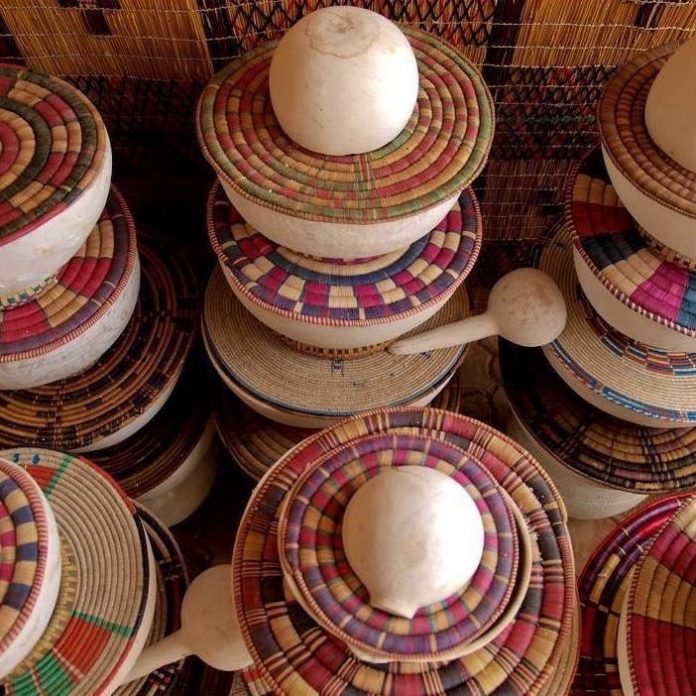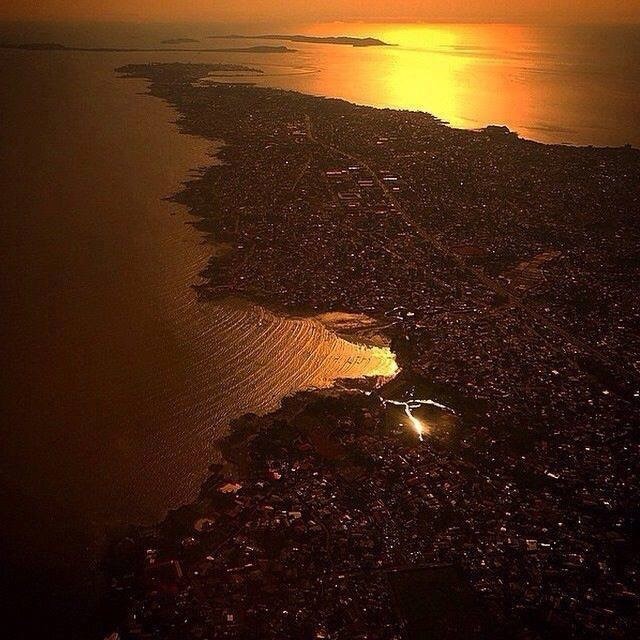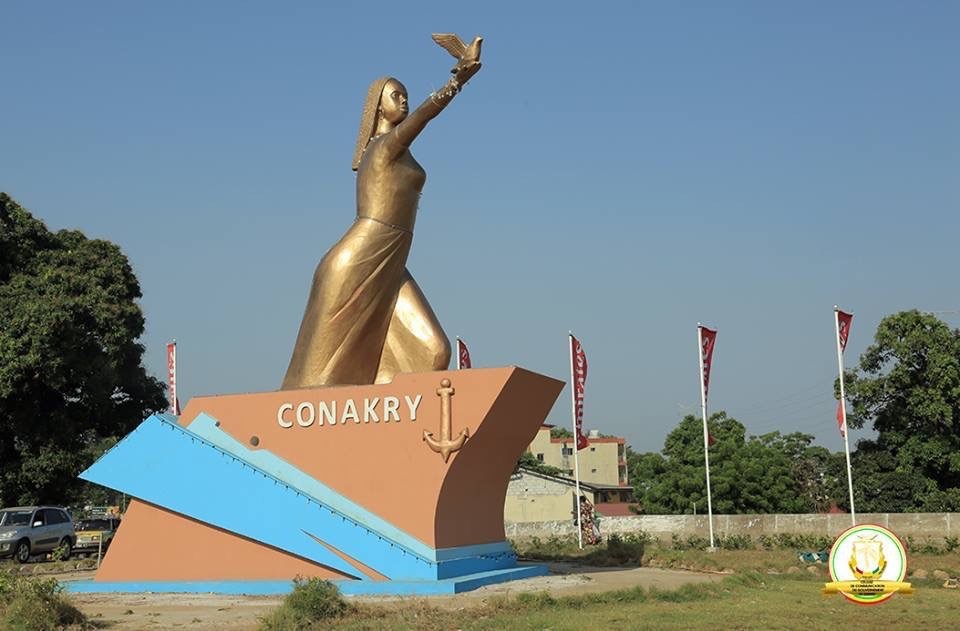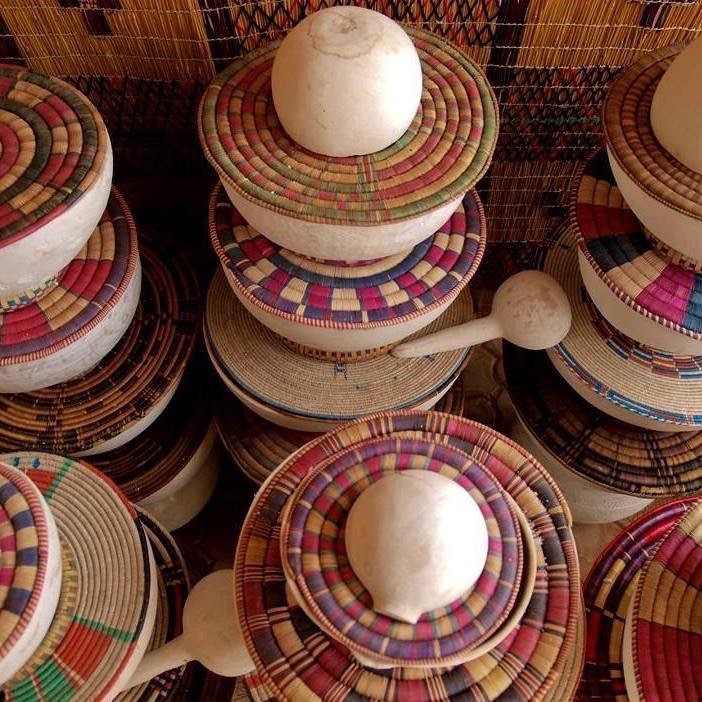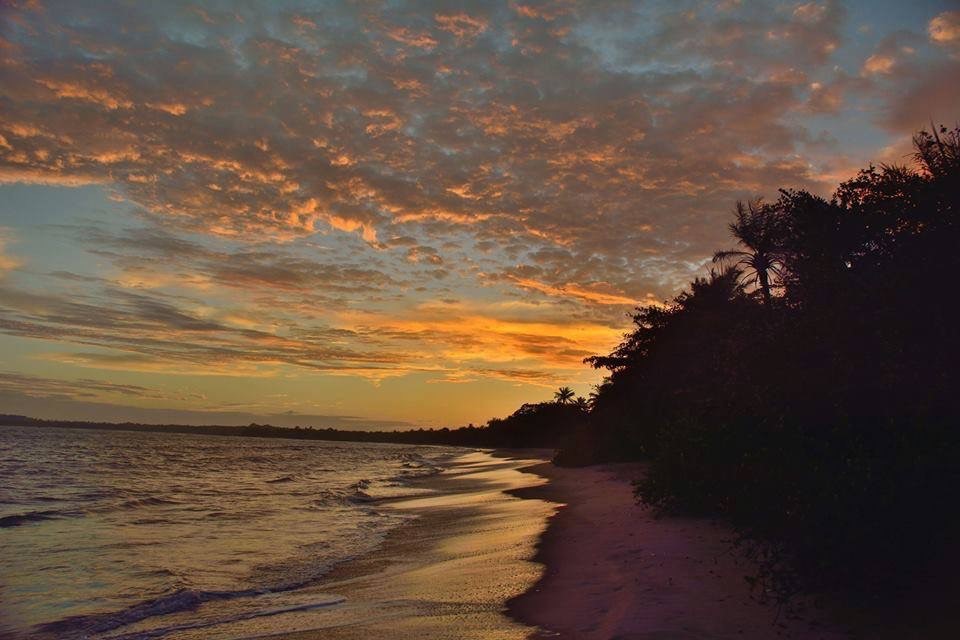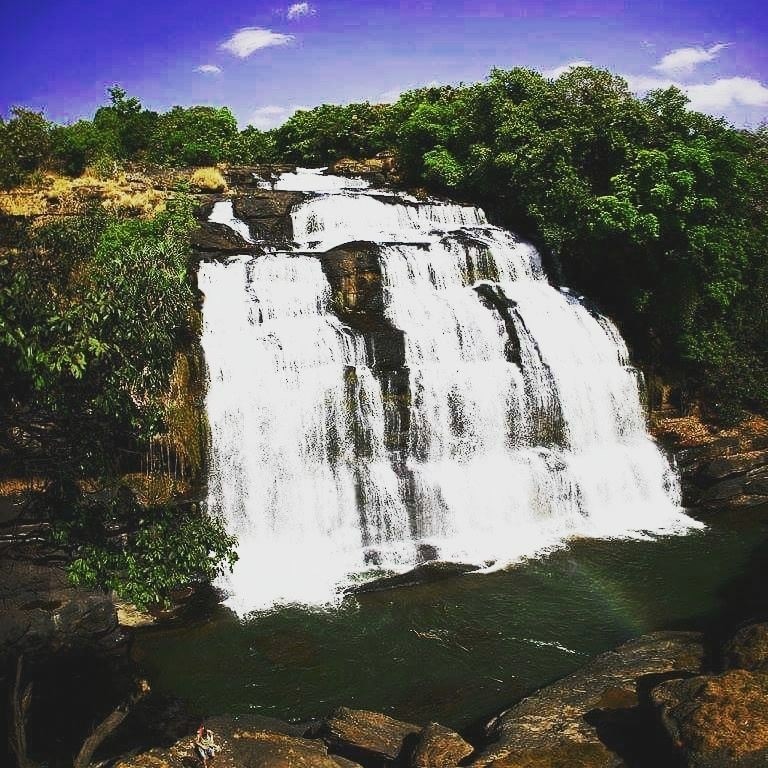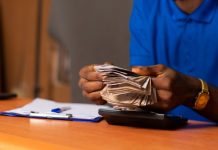THE REPUBILC OF GUINEA
Aerial view of a part of Conakry
The Republic of Guinea which gained its independence
from France on the 2nd October 1958 is located in West Africa, bordering the
North Atlantic Ocean, between Guinea-Bissau and Sierra Leone. The capital is
Conakry and the official language spoken is French.
from France on the 2nd October 1958 is located in West Africa, bordering the
North Atlantic Ocean, between Guinea-Bissau and Sierra Leone. The capital is
Conakry and the official language spoken is French.
Guinea with an estimated population of 12 million has
about 29 ethnic groups. The Fulas or Fulanis make up 40% of the population and
are mostly found in the Fouta Djallon region. The Mandinka, also known as
Mandingo or Malinké, comprise 26% of the population and are mostly found in
eastern side. The Soussou, comprising 11% of the population, are predominantly in
western areas around the capital. And, smaller ethnic groups make up
about 29 ethnic groups. The Fulas or Fulanis make up 40% of the population and
are mostly found in the Fouta Djallon region. The Mandinka, also known as
Mandingo or Malinké, comprise 26% of the population and are mostly found in
eastern side. The Soussou, comprising 11% of the population, are predominantly in
western areas around the capital. And, smaller ethnic groups make up
the remaining 23% of the population, including Kpelle,
Kissi, Zialo, Toma and others. Approximately 10,000 non-Africans live in
Guinea, predominantly Lebanese, French, and other Europeans.
Kissi, Zialo, Toma and others. Approximately 10,000 non-Africans live in
Guinea, predominantly Lebanese, French, and other Europeans.
Approximately 85% of the population is Muslim, 8% is
Christian, with 7% adhere to indigenous religious beliefs.
Christian, with 7% adhere to indigenous religious beliefs.
The country has a total area of 245,860sq km, and
share borders with six countries: Guinea-Bissau, Senegal and Mali on the
northern side; and, Côte d’Ivoire, Liberia and Sierra Leone on the southern
side.
share borders with six countries: Guinea-Bissau, Senegal and Mali on the
northern side; and, Côte d’Ivoire, Liberia and Sierra Leone on the southern
side.
Guinea’s highland’s regions (Fouta Djallon) are the
source for the biggest rivers in West Africa: the Niger, the Gambia, and
Senegal, as well as others numerous rivers flowing to the sea on the west side
of the range in Sierra Leone and Côte d’Ivoire.
source for the biggest rivers in West Africa: the Niger, the Gambia, and
Senegal, as well as others numerous rivers flowing to the sea on the west side
of the range in Sierra Leone and Côte d’Ivoire.
Resources
Guinea is a country full of immense
natural resources including:
• 6.2 million hectares of arable land, of which only 26% or 1.6 million hectares
are exploited and less than 10% cultivated annually.
are exploited and less than 10% cultivated annually.
• 364,000 hectares suitable for irrigation, of which only 9% are
Developed.
• 300 kilometers of coastline, but without an exclusive commercial
port, providing opportunities for access to abundant
fishery resources estimated at between 150,000 and 250,000 tons of fish
fishery resources estimated at between 150,000 and 250,000 tons of fish
per year.
• 1,130 water sources, and a positioning in upriver areas of major
rivers of West Africa (Senegal, Gambia, Niger, and
Mano), giving
Mano), giving
the country the nickname “water tower of West Africa”
• Significant river plains with a river system of 6,500 km, a continental shelf
of 43,000 km2 and important surface water and groundwater resources.
of 43,000 km2 and important surface water and groundwater resources.
• An agricultural population estimated at 7.75 million people, and
an active farming population (between 16 and 55 years)
estimated at 4.29 million people.
estimated at 4.29 million people.
• Traditional and diversified agricultural production which returns
offer a significant scope for improvement.
• An abundant, diverse, and rich pasture estimated at about 70000 km2, or
27% of the total land area, with 350 listed species of forage crops.
27% of the total land area, with 350 listed species of forage crops.
A relatively long rainy season, extending for
5 to 8 month depending on the region, with annual rainfall ranging between
5 to 8 month depending on the region, with annual rainfall ranging between
1,200 mm and 4,000 mm, and providing about
400 billion m3 of
400 billion m3 of
water.
Agriculture
Agriculture is the main source of
subsistence for nearly 80% of the Guinean population and the main source of income
for 57% rural habitants. It remains a key sector for the achievement of poverty
reduction and food security in Guinea. The contribution of agriculture to gross
domestic product (GDP) is estimated
subsistence for nearly 80% of the Guinean population and the main source of income
for 57% rural habitants. It remains a key sector for the achievement of poverty
reduction and food security in Guinea. The contribution of agriculture to gross
domestic product (GDP) is estimated
at 14.2% (in 2010). It may be noted that
rice is the main food crop,
rice is the main food crop,
accounting for 67% of crops grown, 65% of
the country’s cereal demand, 37% of the national labor force, 80%
the country’s cereal demand, 37% of the national labor force, 80%
of the agricultural labor force, 23% of
primary GDP and 6% of national GDP.
primary GDP and 6% of national GDP.
In addition, rice is the highest expenditure
item for Guinean households, representing an average of 20% of their
consumption budget, followed by maize at about 12%.
item for Guinean households, representing an average of 20% of their
consumption budget, followed by maize at about 12%.
An
immeasurable mining potential
immeasurable mining potential
The mining assets of Guinea are not only
important but very diverse.
important but very diverse.
Bauxite
The largest deposits in the world: approximately
40 billion tons (alumina content of above 40%) constituting two thirds of the
world’s deposits.
40 billion tons (alumina content of above 40%) constituting two thirds of the
world’s deposits.
Iron Ore
Nimba mountain(1 billion tons with iron
content between 63 and 68%) and Simandou mountains (more than 2 billion tons
with iron content between 65 and 68%). Guinea has iron resources estimated at 9
billion tons.
content between 63 and 68%) and Simandou mountains (more than 2 billion tons
with iron content between 65 and 68%). Guinea has iron resources estimated at 9
billion tons.
Gold
An annual production of 15 tons of a potential
of several hundreds of tons. 500 tons of confirmed deposits and total resources
estimated at 1000 tons.
of several hundreds of tons. 500 tons of confirmed deposits and total resources
estimated at 1000 tons.
Diamond
Potential reserves estimated at 30 million
carats. Diamonds represent the fourth most exported minerals in Guinea,
following bauxite, alumina and gold.
carats. Diamonds represent the fourth most exported minerals in Guinea,
following bauxite, alumina and gold.
Oil & Gas
There is a significant potential of oil reserves
to explore both offshore and onshore. Also, there are extensive reserves of
to explore both offshore and onshore. Also, there are extensive reserves of
uranium, limestone, nickel, titanium, graphite,
precious stones, cobalt, zinc discovered in several sites of the national
territory.
precious stones, cobalt, zinc discovered in several sites of the national
territory.
Culture
Guinea’s cultural diversity is most evident in its
ceremonial traditions, cuisine, arts, literature, heritage, music, dance and
clothing. Leppi and easter hand-woven material traditionally used as the
national costume. For instance, Leppi exists in two colours: white, usually
worn by men and navy blue worn by both women and men. Imminent figures of
Guinean literature such as Camara Laye (The Black Child), Thierno Monenenbo
Diallo (Peulh, Lamine Kamara (Safrin ou le duel au fouet) and others. Guinean
music incorporates several distinct types of instruments such as drums, Kora,
Balafon (a traditional xylophone) and the Fulani Flute. Also the new generation
were able to ingeniously make a beautiful combination of Afro-reggae, dancehall
and hiphop. Banlieuz’Art and Instint Killer are the most popular group in the
country and beyond. In solos Fodé Baro, Sékouba Bambino, Soul Bang’s can be
chosen on a non-exhautive list of talents. The traditional dances are: Sabar,
Doundoumba, Touppou sesse etc.
ceremonial traditions, cuisine, arts, literature, heritage, music, dance and
clothing. Leppi and easter hand-woven material traditionally used as the
national costume. For instance, Leppi exists in two colours: white, usually
worn by men and navy blue worn by both women and men. Imminent figures of
Guinean literature such as Camara Laye (The Black Child), Thierno Monenenbo
Diallo (Peulh, Lamine Kamara (Safrin ou le duel au fouet) and others. Guinean
music incorporates several distinct types of instruments such as drums, Kora,
Balafon (a traditional xylophone) and the Fulani Flute. Also the new generation
were able to ingeniously make a beautiful combination of Afro-reggae, dancehall
and hiphop. Banlieuz’Art and Instint Killer are the most popular group in the
country and beyond. In solos Fodé Baro, Sékouba Bambino, Soul Bang’s can be
chosen on a non-exhautive list of talents. The traditional dances are: Sabar,
Doundoumba, Touppou sesse etc.
Some Fulani traditional utensils
Touristic
sites
sites
Guinea has diverse tourist attractions
made up of beautiful architectural landscapes in the countryside and numerous
islands. Some of the notable sights include; the Loos Islands which is about
thirty minutes from Conakry, the beaches of Cape Verga, Tristao, Capken and
Alcatraz Islands, Bel Air beach, Sobanè Beach and many others. In the
countryside, there are exciting
made up of beautiful architectural landscapes in the countryside and numerous
islands. Some of the notable sights include; the Loos Islands which is about
thirty minutes from Conakry, the beaches of Cape Verga, Tristao, Capken and
Alcatraz Islands, Bel Air beach, Sobanè Beach and many others. In the
countryside, there are exciting
views like: the Mount Kakulima, 42 km from
Conakry, the Mount Lura also called the Lady of Mali(a region of Fouta
Djallon), highest elevation in the Fouta Djalon, Kinkon Falls
Conakry, the Mount Lura also called the Lady of Mali(a region of Fouta
Djallon), highest elevation in the Fouta Djalon, Kinkon Falls
Sobanè Beach
(Pita), Djouroungui Falls(Pita), Ditinn
Falls(Dalaba), Salla Falls (Labé), Bridal Veil and Kilissi Waters(Kindia), etc.
Falls(Dalaba), Salla Falls (Labé), Bridal Veil and Kilissi Waters(Kindia), etc.
Those interested in eco-tourism will also find
exciting; the Gambia and Niger river bassins; the pine forest and arboretum
Knight of Dalaba; The Hot Springs of Foulamory, Mount Nimba with its
exciting; the Gambia and Niger river bassins; the pine forest and arboretum
Knight of Dalaba; The Hot Springs of Foulamory, Mount Nimba with its
viviparous toads, classified world heritage
by UNESCO and the sacred forests.
by UNESCO and the sacred forests.
For cultural tourism, Guinea is a mosaic of
29 ethnic groups of great diversity and cultural wealth. The country is also home
to a large population of chimpanzees, warthogs, elephants, lions, small venison
and migratory birds.
29 ethnic groups of great diversity and cultural wealth. The country is also home
to a large population of chimpanzees, warthogs, elephants, lions, small venison
and migratory birds.
Djouroungui Falls
Governance
General Lansana Conté still remains a
prominent political figure in Guinea. He joined the French army in 1955 and was
sent to Algeria to take part in the French failed attempt to suppress the independence
movement. At Guinea’s independence three years
prominent political figure in Guinea. He joined the French army in 1955 and was
sent to Algeria to take part in the French failed attempt to suppress the independence
movement. At Guinea’s independence three years
later, he was inducted into its army as a
sergeant and rose to become an officer. In 1971 he was promoted to captain by
the president, Ahmed Sékou Touré, for his role in resisting an attempted
invasion by Guinean exiles from neighbouring Portuguese Guinea, now called
Guinea-Bissau. The tables were turned, when he was appointed to head Guinea’s
support for pro-independence rebels in Portuguese Guinea.
sergeant and rose to become an officer. In 1971 he was promoted to captain by
the president, Ahmed Sékou Touré, for his role in resisting an attempted
invasion by Guinean exiles from neighbouring Portuguese Guinea, now called
Guinea-Bissau. The tables were turned, when he was appointed to head Guinea’s
support for pro-independence rebels in Portuguese Guinea.
Then in 1980, he was elected to the national
assembly. When Sékou Touré, who led Guinea from independence in a violent
dictatorial system, died in March 1984, the prime minister, Louis Lansana Beavogui,
served as president for just a month before Conté toppled him in a military
coup, suspended the constitution
assembly. When Sékou Touré, who led Guinea from independence in a violent
dictatorial system, died in March 1984, the prime minister, Louis Lansana Beavogui,
served as president for just a month before Conté toppled him in a military
coup, suspended the constitution
and banned political activity. The
military administration proclaimed Conté president.
military administration proclaimed Conté president.
Within a year, Conté was fighting off attempts
to remove him from power, led by former Prime Minister Diarra Traoré, who was executed
along with about 100 rebellious soldiers of the
to remove him from power, led by former Prime Minister Diarra Traoré, who was executed
along with about 100 rebellious soldiers of the
former regime. Lansana Conté was the only
military president to install a multiparty rule and favour a market economy in
the early 90s. That led him to win favour in the west by turning away from his
predecessor’s leftwing policies with IMF backed cuts in government spending and
currency devaluation. He planted his political flag firmly in the western camp.
He died on the 22nd December 2008 in Conakry.
military president to install a multiparty rule and favour a market economy in
the early 90s. That led him to win favour in the west by turning away from his
predecessor’s leftwing policies with IMF backed cuts in government spending and
currency devaluation. He planted his political flag firmly in the western camp.
He died on the 22nd December 2008 in Conakry.
Notable personality
Conakry

